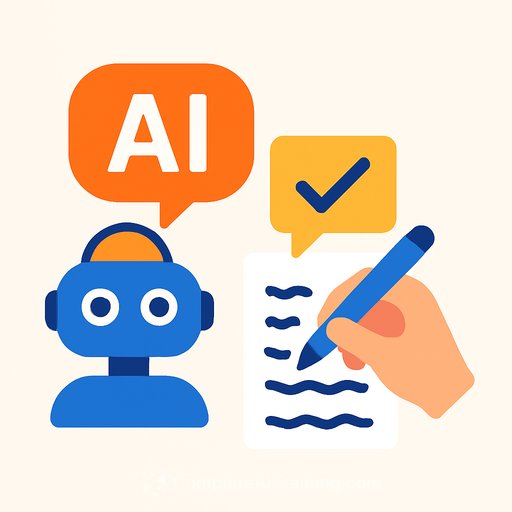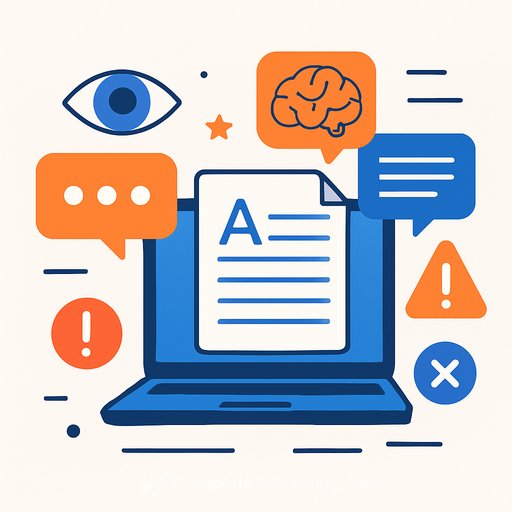AI Models Prefer "Human" Writing - Even When It's AI
New research from Princeton's Center for Digital Humanities shows a clear bias: both readers and AI models rate the same text higher when it's labeled "human-written." Flip the label, and judgments flip with it. For creative writing, attribution now matters as much as output.
The Core Finding
- Across 13 major models, blind preference for AI text was ~49.4%.
- When labeled "AI," preference dropped to 29.8%.
- When labeled "human," preference jumped to 64.1%.
- Models showed a 34.3 percentage point bias swing vs. 13.7 for humans - about 2.5x stronger.
In short: if a story looks the same but the tag says "human," both AI and people like it more. If the tag says "AI," the same traits are dismissed as derivative.
How They Tested It
The authors used Raymond Queneau's Exercices de style - a single anecdote rewritten 99 ways - as a blueprint. They paired 30 human-written styles with AI rewrites generated via minimal prompts (e.g., "Rewrite the story as a science fiction version").
Judges (people and models) saw pairs under three conditions: no labels, correct labels, and swapped labels. In Study 2, 13 models produced 420 stories and evaluated them under the same setups. The bias held across architectures and providers.
Paper: Everyone prefers human writers, including AI
Why Models Skew Pro-Human
Modern LLMs are trained to echo human preference through RLHF, so "defer to human taste" is a learned behavior. Attribution becomes a shortcut: human tag equals craft; AI tag equals recombination. The label reframes how originality and value are judged.
Primer on RLHF: Reinforcement Learning from Human Feedback
What This Means for Working Writers
- Packaging now rivals prose. Labels influence perceived creativity as much as style.
- Disclosure changes reception. If you disclose AI assistance, expect a drop in perceived merit - even if the text is identical.
- Your name has compounding value. A recognizable human voice is a quality signal that algorithms and readers reward.
- Editors need blind review. If you want the best work to win, strip provenance during selection.
Practical Tactics to Keep Your Edge
- Blind A/B testing: Share drafts without attribution. Gather feedback. Then reveal labels and compare reactions.
- Lead with lived detail: Use specifics only you can know - sensory memory, local slang, private constraints, personal stakes.
- Inject constraints: Write with forms (lipogram, retrograde, alexandrine-like meter) to break template-y patterns.
- Kill the "prompt voice": Remove hedging, over-explanation, and tidy conclusions. Use punchy verbs, uneven rhythm, and earned leaps.
- Human-first editing: Treat AI as a rough draft. Rewrite scene beats, reframe metaphors, and re-order paragraphs for intent, not fluency.
- Provenance discipline: For contests and pitches, use blind submissions where allowed. For clients, agree on disclosure norms up front.
- Show your process (selectively): For readers, behind-the-scenes notes signal intention and craft, which counteracts the "mere generation" narrative.
Using AI Without Triggering the Label Effect
- Draft → Distill → Deviate: Generate a skeletal pass, distill the core idea, then rewrite it off-prompt from memory.
- Style separation: Use AI for research scaffolding or outline contrasts; write the final voice yourself.
- Noise for novelty: Add asymmetry: sentence length variance, unexpected image systems, and purposeful omissions.
- Blinded beta reads: Share text labeled "A/B," collect picks and reasons, then map comments to label conditions.
For Editors, Publishers, and Clients
- Adopt blind review in first pass. Remove author and provenance before evaluation.
- Score product, not process. Use rubrics for clarity, novelty, and fitness to brief - independent of authorship.
- Watch your wording. Even "AI-authored" vs. "human-authored" shifts judgments. Keep labels out until selection.
- Align incentives. If you require disclosure, adjust criteria so disclosed work isn't penalized by the label alone.
Limitations to Note
Findings focus on creative writing. The bias is attribution-driven, not a blanket quality verdict. Still, the consistency across 13 models suggests this is a general trait of LLM evaluators, not a quirk of one system.
Run Your Own Mini-Study This Week
- Pick a 300-500 word scene or essay.
- Create a human draft and an AI-assisted draft.
- Share with five peers: first blind, then labeled.
- Track preference swings when labels appear. Note which traits get praised or dismissed under each tag.
If You're Building Your AI Workflow
Want structured practice that avoids prompt-y tells and strengthens voice? Explore practical resources for writers and editors:
Your membership also unlocks:






